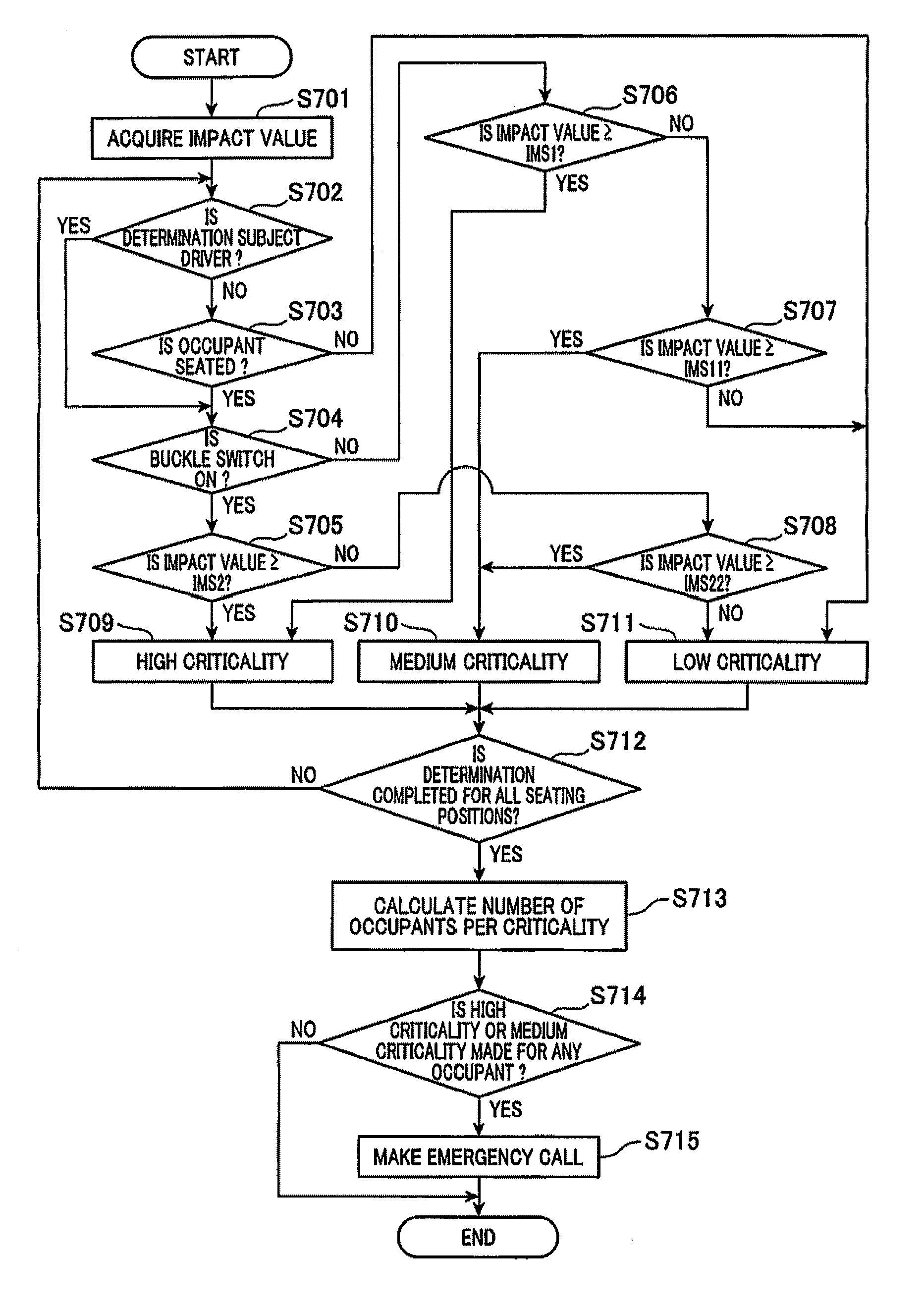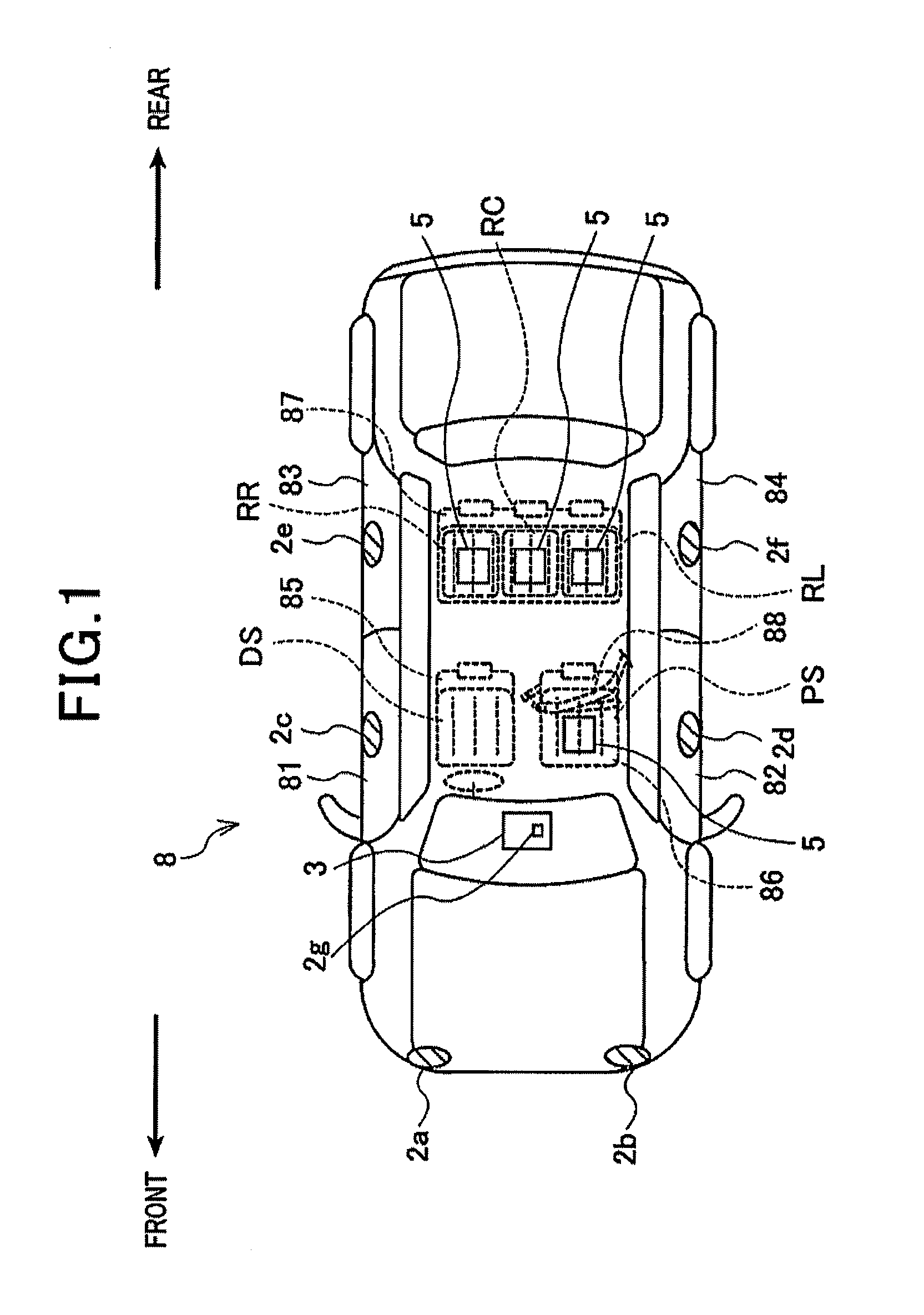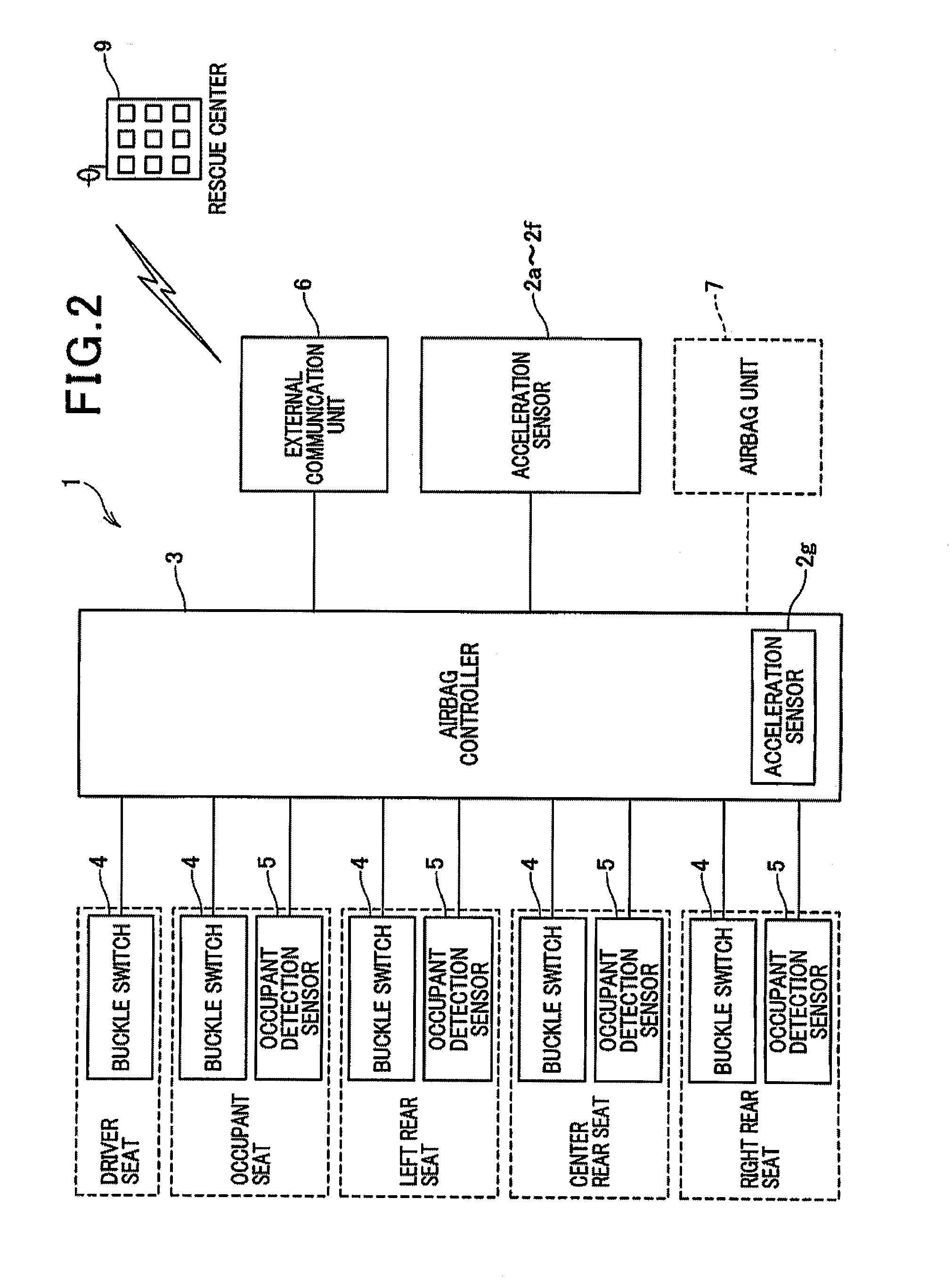Vehicle emergency call apparatus
a technology for emergency situations and vehicles, applied in vehicle components, alarms, instruments, etc., can solve the problem of no technology for estimating the degree of damage to an occupant, and achieve the effect of accurately determining the criticality of the emergency situation and high degree of damage to the occupants
- Summary
- Abstract
- Description
- Claims
- Application Information
AI Technical Summary
Benefits of technology
Problems solved by technology
Method used
Image
Examples
first embodiment
[0022]A vehicle emergency call apparatus 1 according to a first embodiment of the present invention will be described with reference to FIGS. 1 to 3.
[0023]As shown in FIG. 1, the vehicle emergency call apparatus 1 according to the present embodiment is mounted in a vehicle 8. The vehicle 8 is provided with a plurality of acceleration sensors 2a, 2b, 2c, 2d, 2e, 2f, and 2g (each correspond to an impact amount detector equivalent to impact amount detecting means). The acceleration sensors 2a, 2b, 2c, 2d, 2e, 2f, and 2g are hereinafter referred to as acceleration sensors 2 when referred to collectively. The acceleration sensors 2 may be, for example, a capacitance-type acceleration sensor, a piezo resistance-type acceleration sensor, or a heat detection-type acceleration sensor.
[0024]The pair of acceleration sensors 2a and 2b are respectively provided in the left and right areas of a front end portion of the vehicle 8. In addition, the pair of acceleration sensors 2c and 2d are respect...
second embodiment
[0058]Next, the vehicle emergency call apparatus 1 according to a second embodiment will be described with reference to FIG. 4 to FIG. 6.
[0059]Here, only the differences between the first embodiment and the second embodiment will be described. Configurations in FIG. 4 that are the same as those in FIG. 1 are given the same reference numbers. In addition, although not shown in FIG. 4, the vehicle 8 according to the present embodiment is also provided with the acceleration sensors 2 and the occupant detection sensors 5 that are similar to those according to the first embodiment. The acceleration sensors 2 and the occupant detection sensors 5 are mounted in the same positions as those according to the first embodiment.
[0060]As shown in FIG. 4, according to the present embodiment, a collision position of the vehicle 8 (a position of the vehicle 8 at which impact is applied from outside of the vehicle 8) is detected based on the detection values from the acceleration sensors 2 during an ...
third embodiment
[0076]Next, the vehicle emergency call apparatus 1 according to a third embodiment will be described with reference to FIG. 7. Here, only the differences between the first embodiment and the third embodiment will be described. According to the present embodiment, the degree of damage to an occupant is determined so as to be classified into three levels: “high criticality”, “medium criticality”, and “low criticality”.
[0077]First, the airbag controller 3 determines, through the acceleration sensors 2, the magnitude of the impact applied to the vehicle 8 from outside of the vehicle 8 (step S701). Next, in a manner similar to that according to the first embodiment, the airbag controller 3 performs the processes at steps S702, 5703, and S704. Then, the airbag controller 3 proceeds to step S705 or S706.
[0078]When determined that the impact value of the impact applied to the vehicle 8 is lower than the threshold IMS2 at step S705, the airbag controller 3 proceeds to step S708. At step S708...
PUM
 Login to View More
Login to View More Abstract
Description
Claims
Application Information
 Login to View More
Login to View More - R&D
- Intellectual Property
- Life Sciences
- Materials
- Tech Scout
- Unparalleled Data Quality
- Higher Quality Content
- 60% Fewer Hallucinations
Browse by: Latest US Patents, China's latest patents, Technical Efficacy Thesaurus, Application Domain, Technology Topic, Popular Technical Reports.
© 2025 PatSnap. All rights reserved.Legal|Privacy policy|Modern Slavery Act Transparency Statement|Sitemap|About US| Contact US: help@patsnap.com



